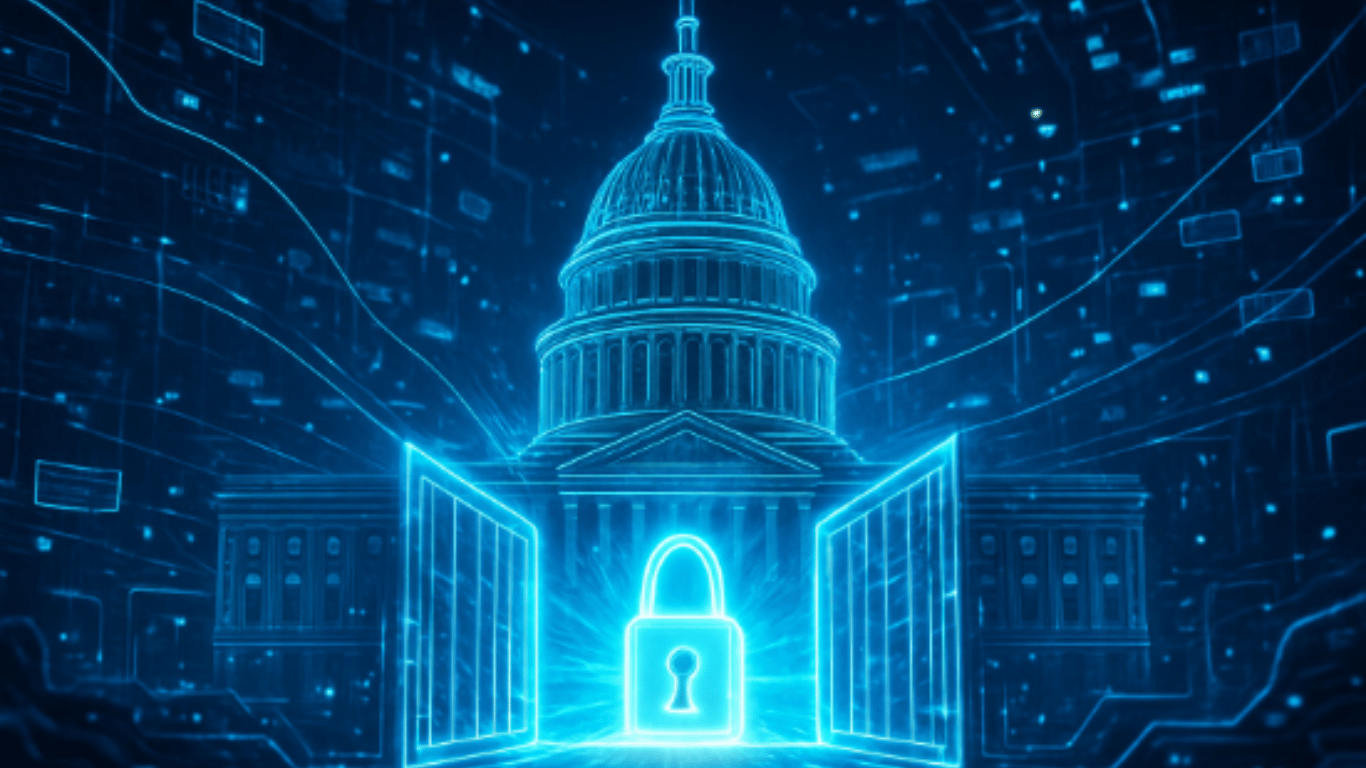Discover top fintech news and events!
Subscribe to FinTech Weekly's newsletter
Read by executives at JP Morgan, Coinbase, Blackrock, Klarna and more
Senate Breaks Historic Impasse
The United States Senate voted Monday to approve a deal ending the longest government shutdown in the nation’s history, restoring funding to federal agencies after more than six weeks of paralysis that disrupted vital services and left millions uncertain about their next paycheck.
The 60–40 vote followed weeks of gridlock that stalled food assistance programs, delayed benefits, and left hundreds of thousands of public employees unpaid. The agreement, passed with near-universal Republican backing and limited Democratic support, funds the government through January 30 and prevents layoffs in the federal workforce until that date.
The deal now moves to the House of Representatives, where Speaker Mike Johnson has indicated a desire for swift passage. President Donald Trump has signaled support, describing the outcome as satisfactory.
While the measure restores short-term stability, it does not resolve deeper fiscal and policy divisions. The U.S. will continue adding roughly $1.8 trillion per year to its $38 trillion national debt. Moreover, key Democratic priorities, such as extending health subsidies that support 24 million Americans, remain uncertain ahead of a December vote.
Lingering Fallout From the Shutdown
The prolonged shutdown left visible scars. Federal nutrition assistance programs like SNAP faced operational disruptions, forcing state agencies to ration remaining funds. In several regions, delays in benefit distribution caused temporary food shortages among low-income families.
Financial institutions have attempted to soften the blow. SpringFour, a financial health fintech, partnered with banks to connect struggling consumers to vetted community resources and nonprofits. The company’s model enables lenders to direct users toward local aid programs that provide essentials such as food, rent support, and emergency cash relief.
Such partnerships have become a lifeline for consumers during the shutdown, filling gaps left by frozen government assistance. They also demonstrate how financial technology can function as a temporary stabilizer during policy breakdowns, though these interventions remain limited in scale compared to federal safety nets.
Despite the Senate’s action, recovery may take weeks. The backlog of payments, paused projects, and disrupted contracts has strained both households and small businesses dependent on federal flows. Air traffic disruptions, already a visible symbol of the shutdown’s impact, reflect the broader logistical challenges of restarting government operations after a 41-day halt.
Political Fault Lines Deepen
The compromise reached Monday underscores persistent divisions in Washington. While Republicans sought to prioritize fiscal restraint and structural reforms to the federal workforce, Democrats pushed for guarantees on health coverage and social programs. The final bill offers neither side a clear victory.
Many Democrats expressed frustration that the agreement does not secure long-term funding for health subsidies, which are set to expire at the end of the year. The issue is expected to resurface in December, when lawmakers will again confront a potential lapse in coverage for millions.
Public sentiment has leaned toward dissatisfaction. A recent Reuters/Ipsos poll conducted in late October showed that half of respondents blamed Republicans for the shutdown, while 43 percent pointed to Democrats. For many Americans, the episode reinforced a sense of political dysfunction in Washington, where partisan strategy often outweighs practical governance.
Regulatory Cuts Raise Systemic Concerns
Beyond the immediate fiscal implications, analysts warn that ongoing political tensions could have deeper effects on financial stability. Trump’s campaign to downsize the federal workforce has already reduced the capacity of key regulators, including those overseeing the banking sector.
According to Adam Turmakhan, chief executive of the Florida-based fintech startup TurmaFinTech, further staff reductions could create dangerous blind spots. He said that trimming already stretched regulators may lead to lapses in oversight, especially among regional and community banks.
Turmakhan noted that such conditions could replicate the failures seen in 2023, when the collapse of Silicon Valley Bank triggered the downfall of Signature Bank and First Republic. A weakened regulatory structure, he warned, would leave the financial system more vulnerable to sudden shocks and liquidity crises.
These fears are not isolated. Earlier this year, a survey conducted by Finextra found that U.S. fintech and banking executives were increasingly worried about deregulation, with many predicting wider technology and supervision gaps under a reduced federal workforce.
While supporters of smaller government view workforce reductions as a path to efficiency, critics argue that it risks undermining safeguards essential to the banking system. The tension between fiscal discipline and financial stability remains unresolved.
The Broader Economic Outlook
Economists estimate that the shutdown has already shaved several tenths of a percentage point from quarterly GDP growth. The impact is particularly acute in local economies dependent on federal employment and procurement contracts. Extended disruptions also complicate monetary policy planning, as incomplete data hinder assessment of inflation and labor trends.
U.S. markets reacted positively to news of a potential reopening, with major stock indices rising Monday afternoon. Yet the relief rally may prove short-lived. Investors are weighing not just the resumption of federal spending but also the possibility of another standoff early next year when funding expires again.
The temporary deal does not prevent the administration from pursuing further spending cuts, and it includes no mechanisms to enforce compliance with previous budget laws. That uncertainty continues to weigh on confidence among contractors, state governments, and financial institutions reliant on predictable federal outlays.
A Fragile Equilibrium
For now, the deal to end the shutdown represents a fragile pause rather than a full resolution. The country faces a compressed timeline to negotiate its next spending package, with contentious debates over healthcare, entitlement programs, and debt limits all likely to resurface before the end of the year.
Financial technology companies, which stepped in to mitigate the effects of suspended federal programs, may again play a role if disruptions return. However, even the most advanced fintech solutions cannot substitute for consistent federal policy.
If planned workforce reductions at regulatory agencies proceed, oversight of regional banks and consumer protection frameworks may erode further. That scenario could deepen vulnerabilities already visible in a system tested by both political instability and market volatility.
The Senate’s vote brought temporary relief to millions of Americans and restored the government’s functionality. But beneath that progress lies a more complex truth: the shutdown may have ended, yet the risks it exposed — institutional fragility, economic inequality, and regulatory strain — remain unresolved.













